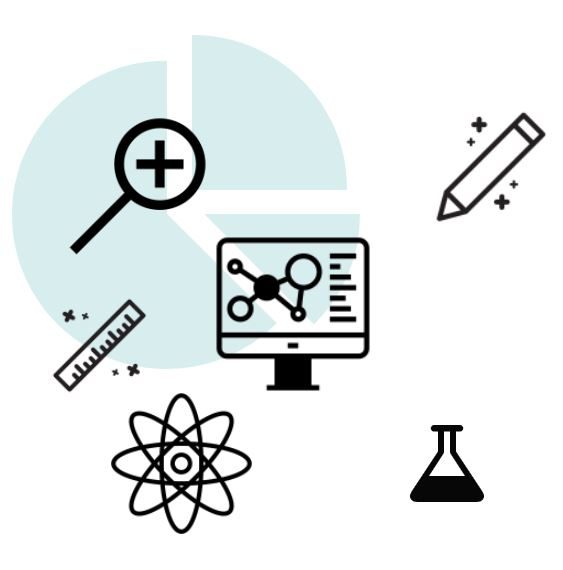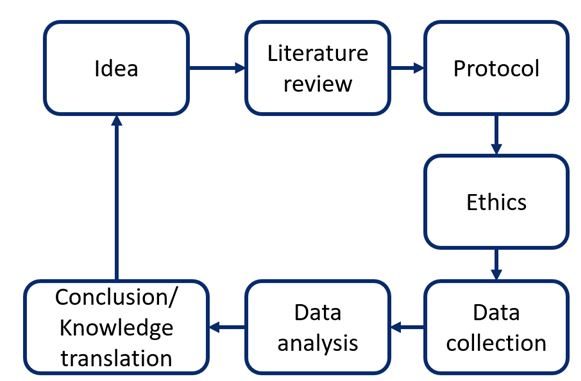What is science and what is research?
Science is a rigorous examination of the world around us. Science involves asking questions, making observations, and evaluating ideas. Science is systematic, transparent, explicit and reproducible.
There are several definitions of research. Creswell (2002, p. 3) suggests one that is simple to understand: research is a “process of steps used to collect and analyze information to increase our understanding of a topic or issue.”
To learn more, check out our glossary of research terms (downloadable PDF).
The two common types of research are basic and applied.
Basic research
Conducted to advance fundamental knowledge about the world, sometimes called laboratory or bench research
Applied research
Focuses on analyzing and solving real-world problems (e.g., discovering the effectiveness of a specific medication)
What is patient-oriented research?
A patient is any individual that experiences a health problem. One of the main focuses of the Canadian Institutes for Health Research (CIHR) in the past few years is patient-oriented research.
Patient-oriented research:
- Is about engaging patients, their caregivers, and family as partners
- Targets the priorities identified by the patients and improve health outcomes
- Is led by multidisciplinary teams in partnership with different stakeholders
- Aims to apply the generated knowledge to improve health care systems and practices
What is participatory research?
“Systematic inquiry, with the collaboration of those affected by the issue being studied, for the purpose of education and taking action or effecting social change.” (Green et al. 1995)
There are 4 key elements in this definition:
Participatory research involves a partnership between the academic researchers and the people who will either be affected by the results or who will need to use the results. Participatory research can be community-based or organization-based.
Participatory research is a research approach and can be used with quantitative methods, qualitative methods, or mixed methods.
There is always an element of learning. All the stakeholders learn something throughout the research process, often from each other.
Participatory research involves action and is undertaken to create a change. For instance, in organizational participatory research, the aim could be to change practice, for example, improving dementia care access.
In participatory research, the stakeholders in the partnership must make decisions together in at least these four stages of the research process:
- Determining the research focus
- Collecting and/or analysizing data
- Interpreting results
- Dissemination and/or implementation
Participatory research is undertaken to make a change by partnering with diverse stakeholders, which in turn can help ensure that the research is relevant and useful.
Overview of research steps
Like other research projects, a patient-oriented research project will include the research problem, needs (knowledge gaps), objectives, questions, and methods.
The main steps are:
- A literature review is conducted to uncover knowledge gaps. These knowledge gaps then guide the research objectives and the research questions.
- Before the project can begin, it must receive ethical approval from the appropriate institutional review board(s).
- Data is collected and analyzed using the appropriate research method (qualitative, quantitative or mixed methods) to produce results.
- These results are interpreted by, communicated to, or applied with, stakeholders in the knowledge translation phase.
General overview of research steps.
Note: Ideally, the research process follows these steps, with conclusions and knowledge translation activities feeding new ideas but it is not always the case.
Additional resources
- engageplus.org: a website with the objective of reducing barriers between university research and community members
- Patient-Oriented Research Level of Engagement Tool (PORLET): a tool created with Patient Partners to provide a standard set of criteria for determining the level of Patient Partner engagement on patient-oriented research teams
Tell us what you think of this page
"*" indicates required fields




